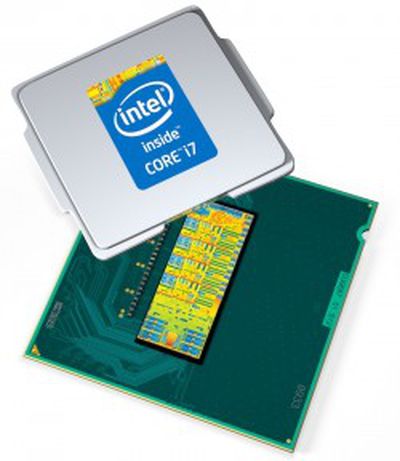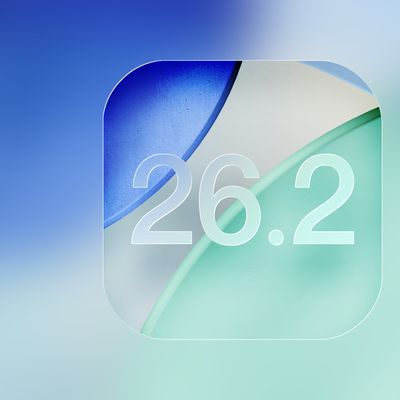Intel Launches Haswell Processors Ahead of WWDC Mac Updates
 Intel today officially announced the launch of its latest family of Core processors, formerly known as "Haswell". The new processors are making their way into a number of new computers, and are expected to be included in Apple's next-generation Macs, some of which are likely to make their debuts at next week's Worldwide Developers Conference (WWDC).
Intel today officially announced the launch of its latest family of Core processors, formerly known as "Haswell". The new processors are making their way into a number of new computers, and are expected to be included in Apple's next-generation Macs, some of which are likely to make their debuts at next week's Worldwide Developers Conference (WWDC).
The new chips offer significant improvements in integrated graphics performance, as well as modest CPU performance improvements and a major effort toward increasing battery life in notebooks.
Delivering Intel's largest generation-over-generation gain in battery life enablement in company history, 4th generation Intel Core processors can bring an 50 percent improvement in battery life over the previous generation in active workloads when watching movies or surfing the Internet, and two to three times improvement in standby battery life. For some systems coming to market this year, over 9 hours of active use battery life or 10 to 13 days of standby with fresh data on a single charge is expected.
Ars Technica has been providing overviews of the new chips, beginning with the quad-core desktop and notebook chips that were unveiled over the weekend. That group included six Core i7 and six Core i5 chips for desktop machines, as well as ten varieties of Core i7 notebook chips.
All of the mobile parts being announced today belong to the i7 family and, like their desktop counterparts, they're all quad-core chips with Hyperthreading enabled. The differences here come in the suffixes: the MX and MQ parts (reversed from Ivy Bridge's QM and QX suffixes) come with the Intel HD 4600 GPU, while most of the HQ parts come with the faster Iris Pro 5200 GPU.
With today's announcement of dual-core Haswell chips highlighted by AnandTech, the picture for Apple's notebook lineup comes into more focus. Intel has emphasized mobile chips for this round of dual-core launches, a move that will likely see the chips showing in updated MacBook Airs and 13-inch MacBook Pros as soon as next week.
A notebook refresh is expected to be the hardware highlight of WWDC alongside previews of OS X 10.9 and iOS 7. The latest rumors suggest that Apple may even be able to slim down the 13-inch Retina MacBook Pro, which is currently slightly thicker than its 15-inch sibling. Less substantial tweaks are expected for the MacBook Air, although the move to Haswell should offer significant performance improvements in certain areas.
Popular Stories
Apple seeded the second iOS 26.2 Release Candidate to developers earlier this week, meaning the update will be released to the general public very soon.
Apple confirmed iOS 26.2 would be released in December, but it did not provide a specific date. We expect the update to be released by early next week.
iOS 26.2 includes a handful of new features and changes on the iPhone, such as a new...
Google Maps on iOS quietly gained a new feature recently that automatically recognizes where you've parked your vehicle and saves the location for you.
Announced on LinkedIn by Rio Akasaka, Google Maps' senior product manager, the new feature auto-detects your parked location even if you don't use the parking pin function, saves it for up to 48 hours, and then automatically removes it once...
Apple has ordered 22 million OLED panels from Samsung Display for the first foldable iPhone, signaling a significantly larger production target than the display industry had previously anticipated, ET News reports.
In the now-seemingly deleted report, ET News claimed that Samsung plans to mass-produce 11 million inward-folding OLED displays for Apple next year, as well as 11 million...
Apple today released new firmware designed for the AirPods Pro 3 and the prior-generation AirPods Pro 2. The AirPods Pro 3 firmware is 8B30, up from 8B25, while the AirPods Pro 2 firmware is 8B28, up from 8B21.
There's no word on what's include in the updated firmware, but the AirPods Pro 2 and AirPods Pro 3 are getting expanded support for Live Translation in the European Union in iOS...
Apple is about to release iOS 26.2, the second major point update for iPhones since iOS 26 was rolled out in September, and there are at least 15 notable changes and improvements worth checking out. We've rounded them up below.
Apple is expected to roll out iOS 26.2 to compatible devices sometime between December 8 and December 16. When the update drops, you can check Apple's servers for the ...
The AirTag 2 will include a handful of new features that will improve tracking capabilities, according to a new report from Macworld. The site says that it was able to access an internal build of iOS 26, which includes references to multiple unreleased products.
Here's what's supposedly coming:
An improved pairing process, though no details were provided. AirTag pairing is already...
Apple today seeded the second release candidate version of iOS 26.2 to developers and public beta testers, with the software coming one week after Apple seeded the first RC. The release candidate represents the final version iOS 26.2 that will be provided to the public if no further bugs are found.
Registered developers and public beta testers can download the betas from the Settings app on...
Apple is actively testing under-screen Face ID for next year's iPhone 18 Pro models using a special "spliced micro-transparent glass" window built into the display, claims a Chinese leaker.
According to "Smart Pikachu," a Weibo account that has previously shared accurate supply-chain details on Chinese Android hardware, Apple is testing the special glass as a way to let the TrueDepth...
Wednesday December 10, 2025 12:22 pm PST by
Juli CloverThe next-generation low-cost iPad will use Apple's A19 chip, according to a report from Macworld. Macworld claims to have seen an "internal Apple code document" with information about the 2026 iPad lineup.
Prior documentation discovered by MacRumors suggested that the iPad 12 would be equipped with an A18 chip, not an A19 chip. The A19 chip was just released this year in the iPhone 17, and...
Apple's next-generation Studio Display is expected to arrive early next year, and a new report allegedly provides a couple more details on the external monitor's capabilities.
According to internal Apple code seen by Macworld, the new external display will feature a variable refresh rate capable of up to 120Hz – aka ProMotion – as well as support for HDR content. The current Studio...
 Intel today officially announced the launch of its latest family of Core processors, formerly known as "Haswell". The new processors are making their way into a number of new computers, and are expected to be included in Apple's next-generation Macs, some of which are likely to make their debuts at next week's Worldwide Developers Conference (WWDC).
Intel today officially announced the launch of its latest family of Core processors, formerly known as "Haswell". The new processors are making their way into a number of new computers, and are expected to be included in Apple's next-generation Macs, some of which are likely to make their debuts at next week's Worldwide Developers Conference (WWDC).
























